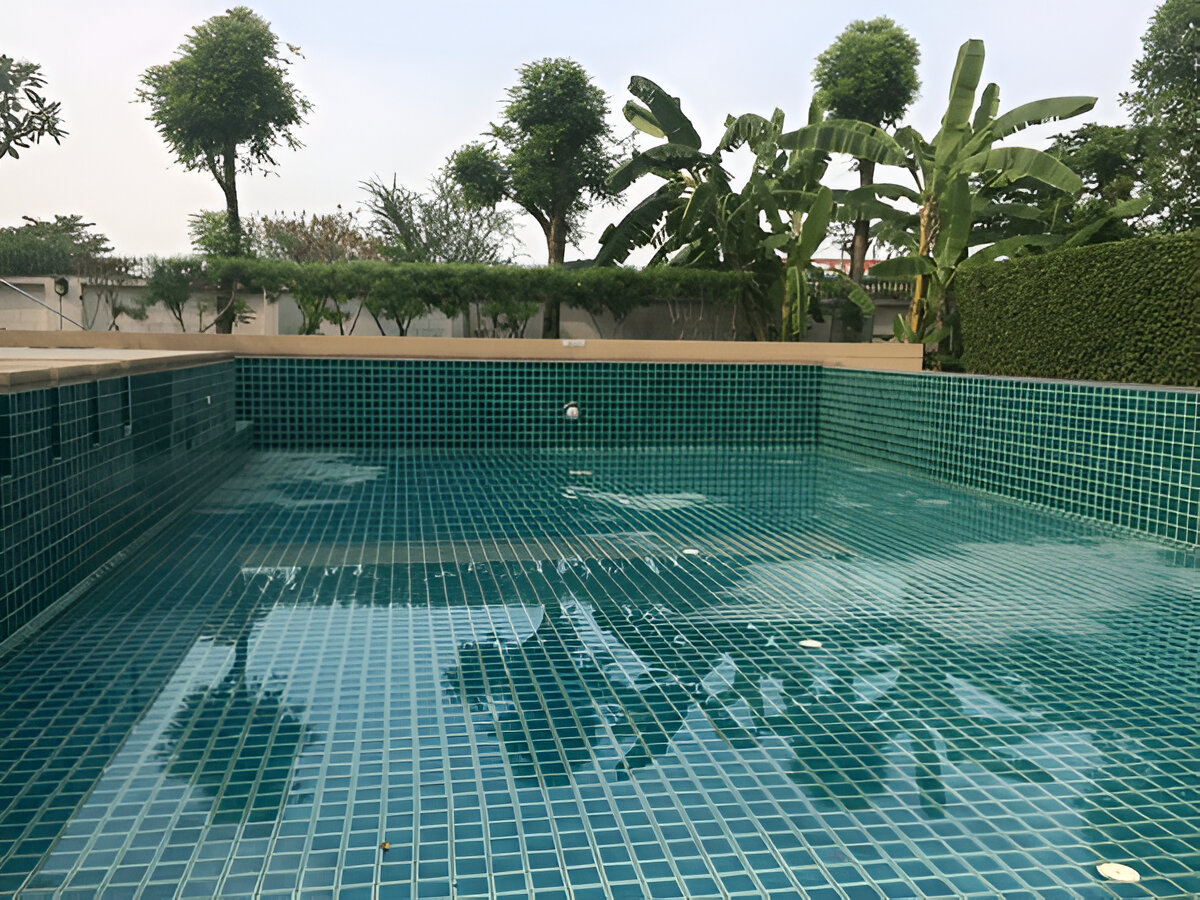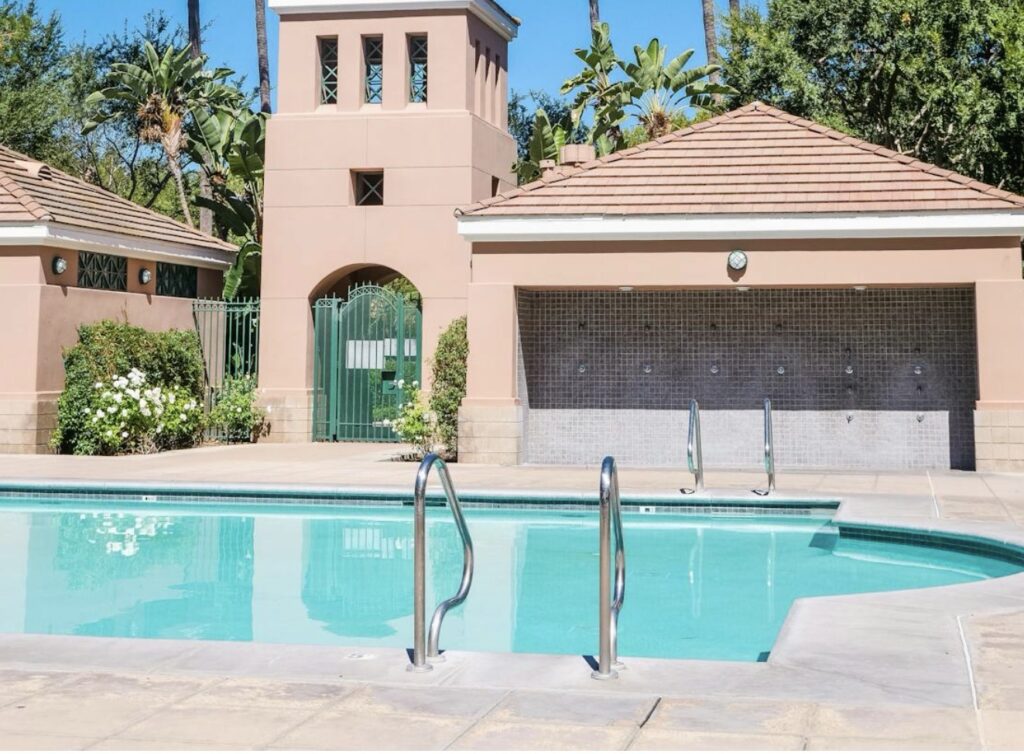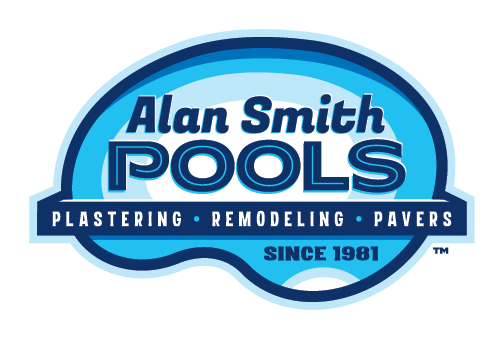Your swimming pool is a valuable investment in your property, so it’s important to know how to detect and repair leaks. A leaking pool not only wastes water but can also cause structural damage, higher utility bills, and expensive repairs if not taken care of.
At Alan Smith Pool Plastering & Remodeling, we’ve seen many cases where finding and fixing leaks early on saved homeowners a lot of money in repair costs. This guide will teach you:
- How to identify different types of pool leaks
- How to use proven methods for finding leaks
- How to implement effective solutions for fixing leaks
- How to maintain your pool and prevent future leaks
We have reliable techniques for spotting and fixing pool leaks. Whether you enjoy doing things yourself or are thinking about getting professional help, this guide will give you the knowledge you need to protect your pool investment and save water.
Understanding Pool Leaks
Pool leaks refer to any unwanted water loss from your swimming pool’s structure or equipment. These leaks can waste thousands of gallons of water each year, resulting in significant increases in water bills and potential structural damage to your property.
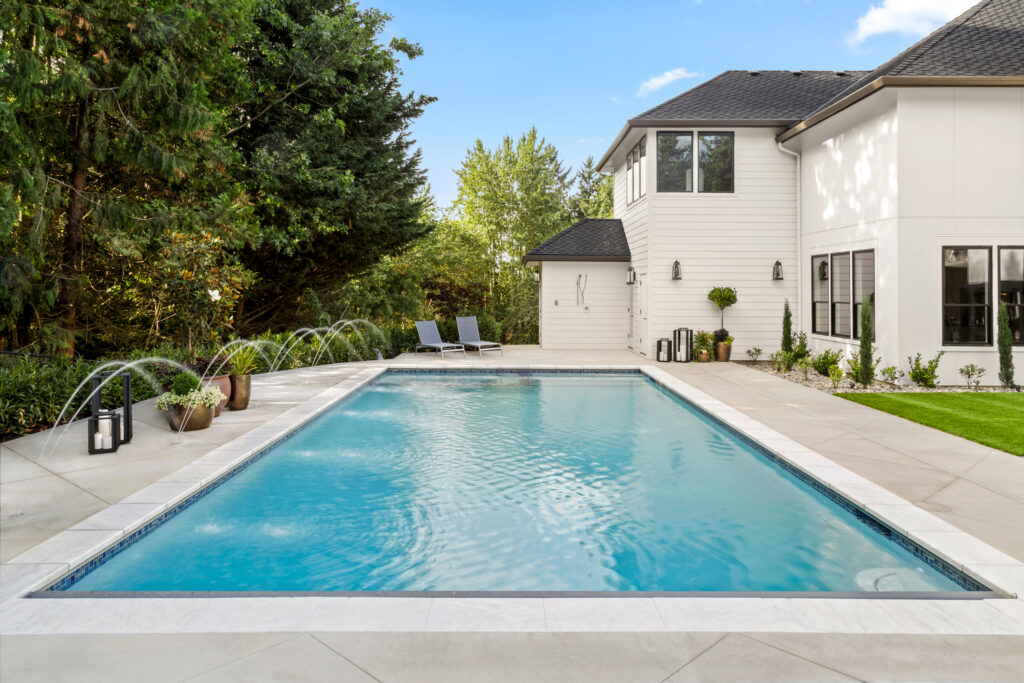
Common Causes of Pool Leaks:
- Structural cracks in the pool shell
- Damaged skimmer boxes or light fixtures
- Loose or deteriorated tile grout
- Faulty plumbing connections
- Worn-out pump seals
- Damaged pool liner
- Separation between coping and deck
Water Loss: Evaporation vs. Leaks
A typical pool loses ¼ to ½ inch of water daily through natural evaporation. Factors affecting evaporation include:
- Air temperature
- Humidity levels
- Wind exposure
- Sun intensity
- Use of pool covers
You’re likely dealing with a leak if your pool loses more than 2 inches of water per week. Signs that indicate leaks rather than evaporation:
- Wet spots around the pool area
- Uneven water loss patterns
- Algae formation despite proper chemical balance
- Air bubbles in the return lines
- Cracks or gaps in the pool structure
- Rising water bills without increased usage
Understanding these differences helps you identify potential problems early on, preventing expensive repairs and conserving water resources.
Step 1: Identify the Type of Leak
The Bucket Test is the first method you should use to find out if your pool has a leak. It’s a simple and effective way to figure out if your pool is losing water because of a leak or just normal evaporation.
Here’s how to perform the Bucket Test:
- Fill a 5-gallon bucket with pool water
- Place the bucket on the pool steps or hang it from the pool edge
- Mark the water level inside the bucket
- Mark the pool’s water level on the outside of the bucket
- Wait 24 hours
- Compare the two water levels
Reading Your Results:
- Equal water level drops = natural evaporation
- Pool level drops more = active leak present
- 1/8 inch difference = approximately 500 gallons lost daily
You can enhance the accuracy of your test by:
- Running the test with pool equipment on and off
- Testing during stable weather conditions
- Maintaining consistent water temperature
If you notice a significant difference between the water levels, it means there’s a leak that needs immediate attention. The location of water loss can vary depending on whether the leak happens when the equipment is running or not. This information is helpful for finding out where the leak is and deciding how to fix it.
Step 2: Inspect for Visible Signs
A thorough visual inspection can reveal telltale signs of pool leaks. Start your inspection at the waterline and work your way down, paying close attention to these specific areas:
Pool Structure Signs:
- Cracks in tiles, especially those wider than 1/8 inch
- Loose or falling tiles
- Gaps in the coping stones
- Settling or sinking of the deck around the pool
- Wet spots or algae growth in areas that should be dry
- Air bubbles rising from the pool floor or returns
- Gaps between the skimmer and pool wall
Chemical Level Indicators:
- Rapid drops in chlorine levels
- Unstable pH readings
- Increased calcium hardness
- Higher than normal acid demand
Ground Inspection Points:
- Soft or mushy spots in the yard near the pool
- Unexplained wet areas in the landscape
- Unusual grass growth patterns around the pool
- Standing water near pool equipment
Your pool’s chemical balance serves as an early warning system. When water escapes through leaks, it takes chemicals with it. You’ll notice you’re using more chemicals than usual to maintain proper levels. A consistent need to add chemicals, particularly if you’ve maintained stable levels previously, suggests water loss through leakage rather than normal use.
Step 3: Conduct a Dye Test
A dye test is a precise method to pinpoint the exact location of pool leaks. This technique uses specialized leak detection dye – a concentrated liquid that’s darker and denser than pool water.
How the Dye Test Works:
- The dye follows the path of water movement
- Colored streams indicate the direction of water flow
- Dye disappearing into a specific spot confirms leak location
Performing Your Dye Test:
- Gather your materials:
- Pool leak detection dye
- Goggles
- Pool brush or pole
Test preparation:
- Turn off pool pumps and filters
- Wait 15-30 minutes for water to settle
- Put on goggles for better underwater visibility
- Testing process:
- Squeeze small amounts of dye near suspected leak areas
- Hold the dye bottle 12-18 inches from the surface
- Watch the dye’s movement pattern
- Test one area at a time
Target Areas for Testing:
- Visible cracks or gaps
- Around pool lights and returns
- Skimmer boxes
- Main drain
- Tile line joints
- Steps and ladder attachments
The dye test works best in still water conditions. If you notice the dye being pulled into a crack or opening, you’ve identified your leak location. Multiple test spots might be necessary to locate all potential leaks.
Step 4: Examine Pool Equipment for Potential Leaks
Your pool’s mechanical components are vital for ensuring efficient water circulation and filtration. If any of these components develop leaks, they can be difficult to spot without a thorough inspection. Leaks in equipment may lead to significant water loss and even damage to the pool’s infrastructure, so checking these areas regularly can prevent costly repairs down the road.
Key Equipment Areas to Inspect:
Pump System:
- Pump Housing: Look for visible cracks, splits, or damage in the housing. These can let water leak out or air seep in, which affects the pump’s efficiency.
- Shaft Seals: Inspect seals around the pump’s shaft for signs of wear. A compromised shaft seal will lead to water leaking into the motor, potentially causing damage.
- Pump Lid O-rings: Check the condition of the O-ring that seals the pump lid. If it’s worn or cracked, it may allow air or water to leak out. Ensure it fits tightly to avoid leakage.
- Water Accumulation Under the Pump: If there is water pooling beneath the pump, it could indicate a leak in the pump itself or the connected hoses.
Filter Components:
- Filter Tank: Check the filter tank for cracks or leaks, especially around the seams. Hairline fractures may allow water to escape or reduce the filter’s efficiency.
- Multiport Valve Seals: Inspect the seals on the multiport valve for damage or deterioration, which can cause water to leak out during filtration.
- Pressure Gauge Connections: Examine the pressure gauge connections for leaks or corrosion that may lead to inaccurate readings or water loss.
- Band Clamps: Inspect band clamps around the filter housing for signs of rust or looseness, which can cause leaks.
Plumbing Connections:
- Union Fittings: Ensure that the union fittings connecting pipes to equipment are secure and free from cracks. Loose fittings are a common source of leaks.
- Valve Stems and Gaskets: Inspect the valve stems and gaskets for signs of wear or damage. Gaskets that are cracked or improperly sealed can cause water to leak out.
- Threaded Connections: Check threaded connections between pipes and equipment for signs of wear or corrosion. If threads are stripped or damaged, they may need to be replaced to prevent leaks.
- Pipe Joints: Look for any wet spots around pipe joints or connections. Even small amounts of moisture can indicate a minor leak that may worsen over time.
Signs of Equipment Leaks:
- Water pooling beneath or around equipment
- Air bubbles in the pump basket
- Decreased water pressure, particularly in the return jets
- Unusual or loud noises coming from the pump or filter system
- A sudden increase in water usage or higher-than-normal water bills
To detect equipment leaks, run your pool system and observe the water flow. Pay attention to any visible drips, wet areas, or unusual noises. Check the equipment after turning it on and off, as pressure changes can make leaks more apparent. Run your hands along the pipes and equipment to feel for moisture or wetness.
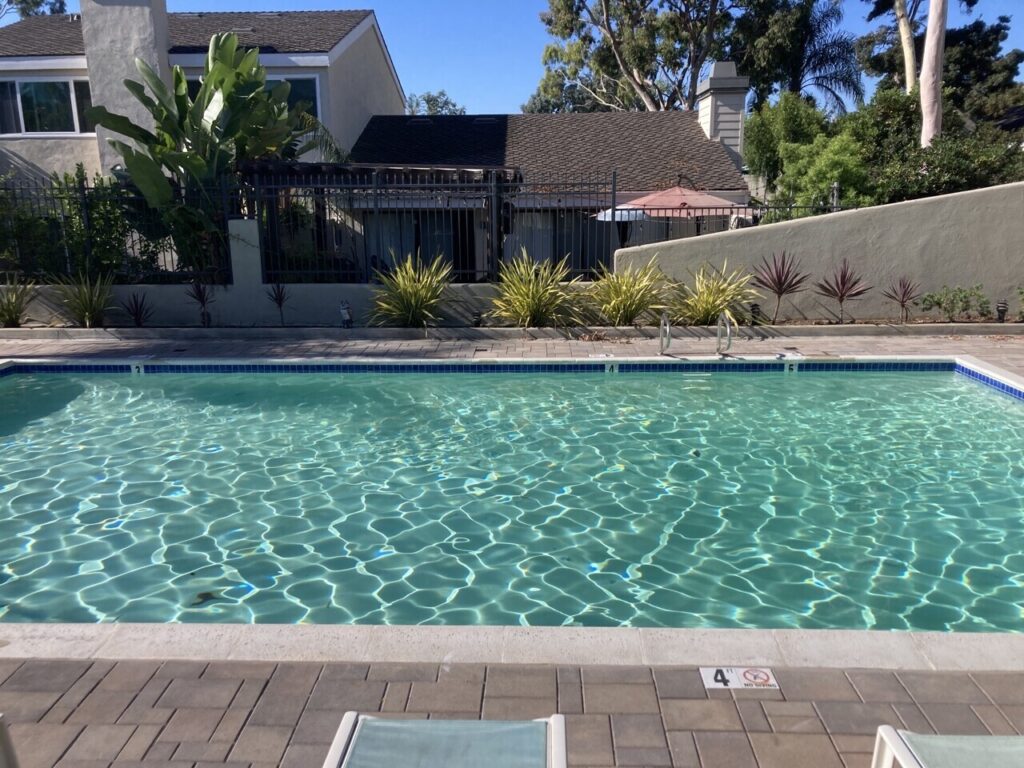
Step 5: Repair Minor Leaks Yourself or Seek Professional Help?
While some minor pool leaks can be easily repaired on your own, others may require the expertise of a professional. Knowing when to tackle the repair yourself and when to seek help can save you time, effort, and money.
DIY-Friendly Repairs:
You can handle several common pool leaks yourself, especially if you are equipped with the right tools and materials.
- Small Cracks in Pool Plaster (under 1/8 inch): These minor cracks can be patched with waterproof epoxy putty, which will seal them temporarily and prevent further damage.
- Surface-Level Tile Grout Issues: Grout problems around tiles can often be fixed by resealing or applying new grout.
- Minor Vinyl Liner Tears: Small tears in a vinyl liner can be patched using a vinyl patch kit. Make sure to clean the area thoroughly before applying the patch.
- Basic Skimmer Repairs: Leaks in the skimmer basket or around the skimmer lid can often be fixed by replacing the seal or tightening the screws.
- O-Ring Replacements: Replacing old O-rings on pumps, valves, or filters is relatively simple with the correct size and type of replacement O-ring.
Essential DIY Tools:
- Waterproof epoxy putty
- Vinyl patch kits
- Pool-grade silicone sealant
- Underwater tape (for use while the pool is still full of water)
- Basic hand tools (wrenches, screwdrivers, etc.)
Call a Professional When:
Some pool leaks are more complicated and should be handled by a licensed pool technician. Calling a professional is necessary if:
- Underground Plumbing Issues: Leaks occurring below the pool’s surface or in buried pipes are difficult to detect and repair without specialized equipment.
- Structural Cracks in Pool Walls: Large cracks in the pool’s structure may require extensive repairs, potentially involving resurfacing or re-plastering.
- Multiple Leaks: If you notice more than one leak or a persistent issue that doesn’t resolve with minor repairs, it’s time to call in an expert.
- Specialized Equipment Repairs: If your pool’s filtration or pump system is malfunctioning and requires specialized tools or knowledge, it’s safer to leave it to a professional.
- Previous DIY Attempts Have Failed: If your previous attempts to repair the leak have not worked, a professional will have the expertise to properly assess and fix the issue.
In general, DIY repairs are great for smaller issues, but if the leak is significant, recurring, or hard to locate, a professional repair service will ensure your pool is fixed properly and that no additional damage is caused.
Safety Note: Never attempt repairs involving electrical components or structural issues. These require certified professionals with proper equipment and expertise.
A professional pool service brings specialized leak detection equipment, years of experience, and warranties for their work. At Alan Smith Pool Plastering & Remodeling, our certified technicians handle complex repairs with precision, ensuring long-lasting results backed by our 10-year warranty.
For DIY repairs, start with the simplest solution first. Apply patch kits or waterproof tape according to manufacturer instructions. Monitor the repair site for 24-48 hours to ensure effectiveness before moving forward with additional fixes.
Conclusion
Your swimming pool is a valuable investment in your home and a source of enjoyment for your family. By taking immediate action to identify and repair leaks, you can save water and preserve this investment for years to come.
With the knowledge gained from this guide, you now have the tools to:
- Distinguish between normal evaporation and actual leaks
- Perform effective tests to locate leak sources
- Decide whether to tackle repairs yourself or seek professional assistance
- Implement preventive maintenance strategies
Don’t wait for minor leaks to escalate into major issues. Being proactive with your pool maintenance will not only save you money on repairs but also conserve thousands of gallons of water each year.
If you’re ready to address your pool leak concerns, reach out to us at Alan Smith Pool Plastering & Remodeling. With over 40 years of experience, our team is here to help you maintain the integrity of your pool. Contact us for a free consultation and let us assist you in protecting your pool investment.
FAQs (Frequently Asked Questions)
How can I determine if my pool is leaking or if it's just evaporation?
You can perform a Bucket Test to compare the water level in your pool with the water level in a bucket placed on the pool steps. If the pool water level drops significantly more than the bucket's, you likely have a leak.
What should I do if I suspect a leak in my pool equipment?
Inspect common components such as pumps and filters for leaks. Check O-rings and fittings for any signs of wear or damage. If you find issues, consider repairing them yourself or consulting a professional.
How does a dye test help in detecting pool leaks?
A dye test involves using leak detection dye around suspected areas of leakage. If there is a leak, the dye will be drawn into it, making it easier to identify the exact location of the problem.
Can I fix minor leaks in my pool myself?
Yes, minor leaks can often be repaired using DIY solutions such as waterproof tape or vinyl patch kits. However, for more complex issues like underground plumbing problems, it is advisable to call a professional.
What regular maintenance practices can help prevent future pool leaks?
Routine maintenance checks are crucial for preventing leaks. Recommended practices include seasonal inspections of your pool's structure and equipment, ensuring all components are functioning properly and addressing any small issues before they become major problems.
